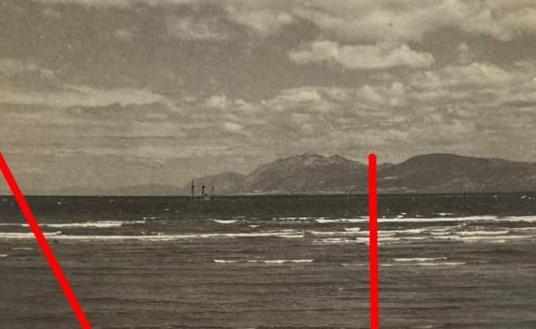
Three WW2 wrecks mysteries solved, by George Karelas
Interviews, Shipwrecks, Then and Now, WW2, WW2 in Greece, WW2 WrecksBy Pierre Kosmidis
Research and photos by George Karelas, submitted to www.ww2wrecks.com and used by permission
Mr. George Karelas, from Patras, Greece, is a leading expert and respected researcher in WW2 Wrecks in Greece. He has identified several shipwrecks and as an experienced scuba diver has documented many of the WW2 Wrecks in Greece.
After examining photos of different ships, either sunk or beached during WW2 in Greece, Mr. Karelas has come up with new information, finally managing to identify them, almost 85 years after these photos were shot.
Here is what Mr. Karelas said to www.ww2wrecks.com:
“In my free time I relax by looking at old photos of ships that were wrecked in the Greek seas, trying to identify them. This gives me a double pleasure, firstly the thrill and excitement of finding something, then the contribution to the history of World War 2 in our country.
During WW2 many German officers – and even soldiers – carried cameras with them (pre-war Germany was the world’s largest manufacturer of cameras) and photographed the campaigns in which they took part. This resulted in many photographs being sold at auctions from the German invasion of Greece (Operation Merkur) which began on April 6, 1941 and resulted in the occupation of Greece by the Axis powers. There followed a difficult period of three and a half years of triple occupation of the country by the forces of Germany, Italy and Bulgaria.
The methodology I follow for the identification is firstly the similarity of the depicted ship, the general topography and the characteristics of the beaches, coasts, etc. Then I examine the depth of the sea in relation to the beached or semi-submerged ships. A key parameter is collaboration – conversation with researchers dealing with the same subject. In this research I collaborated with Aris Bilalis, author together with Kostas Thoktaridis of the book “Raising History”, which deals with the raising of shipwrecks after the war in Greece.
Patience plays a big role in this kind of research. Over the years, new documents and photographs come to light that often help in identification.
Also, the identification of some shipwrecks removes some ships from the list to be investigated, so with the in situ method, some that are considered possible are excluded and we are led to the rest of the list.
A mystery that was solved some years later
Cargo steamer “Kechrea” sunk on April 25th, 1941 in Fragolimano Sofikou in Corinthia.

The initial auction photos of the Germans taking their baths with the ship in the background did not lead to a specific area.
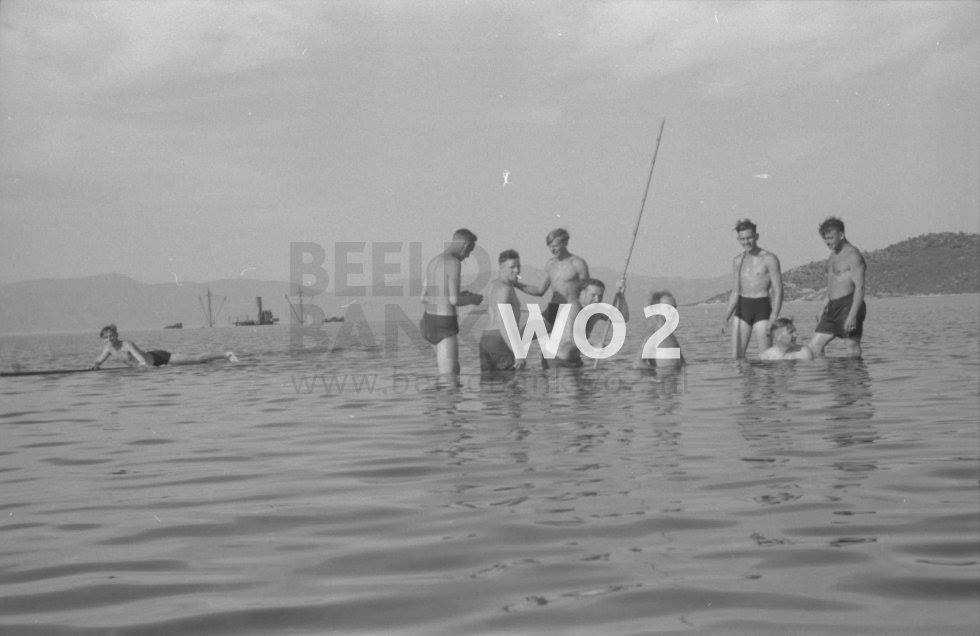
The identification was made years later when in a third photograph also auctioned on the internet a half-submerged steamer can be clearly distinguished, so the comparison of the ship’s silhouette and the background led to the identification of the ship and the location in the other two photographs. The name “Larissa” is inaccurate.
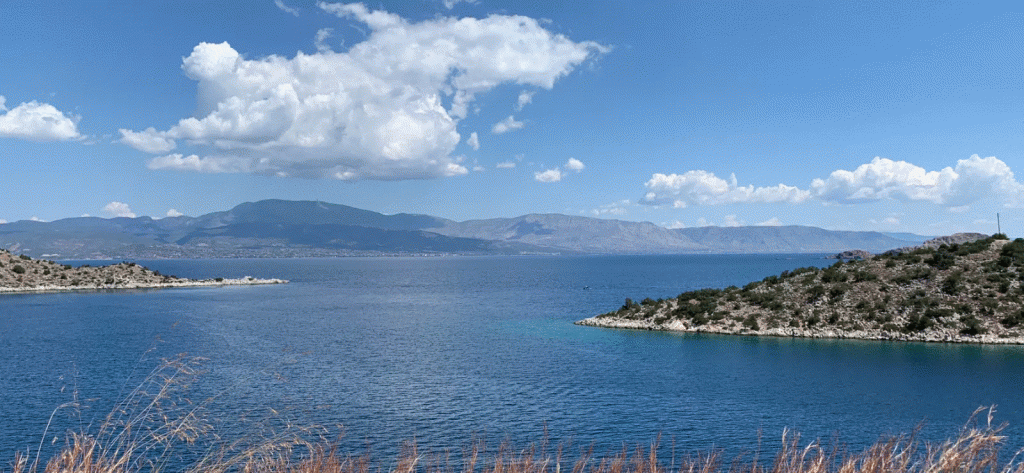
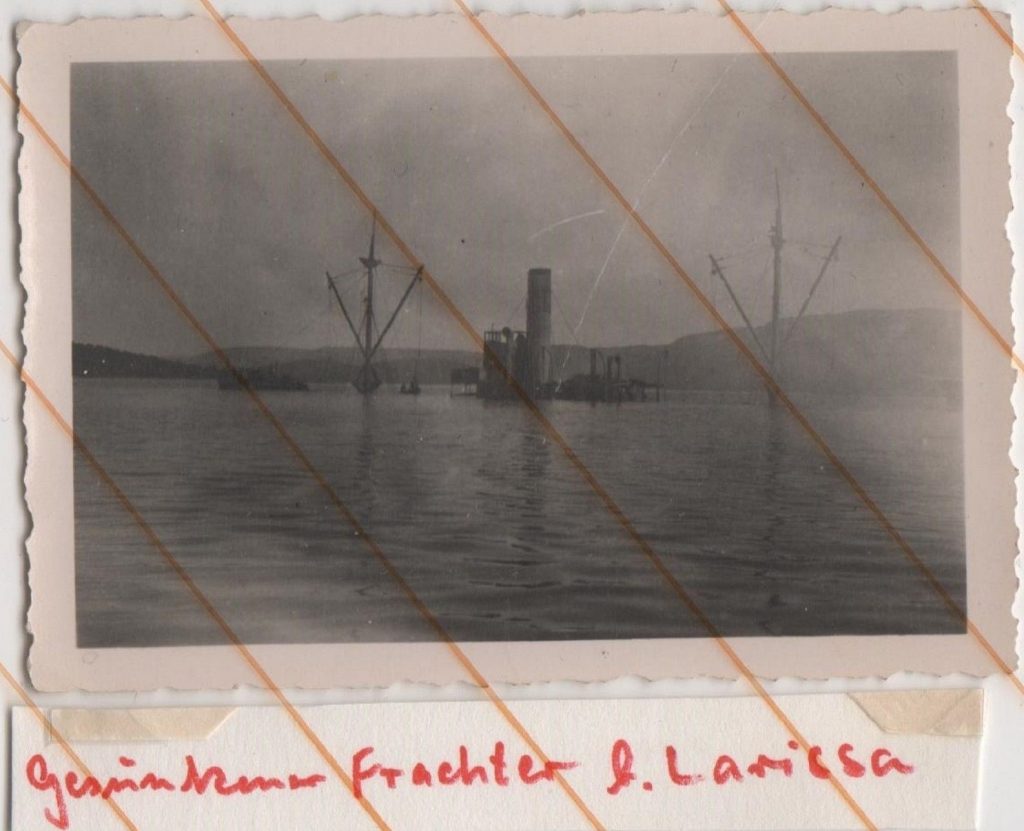
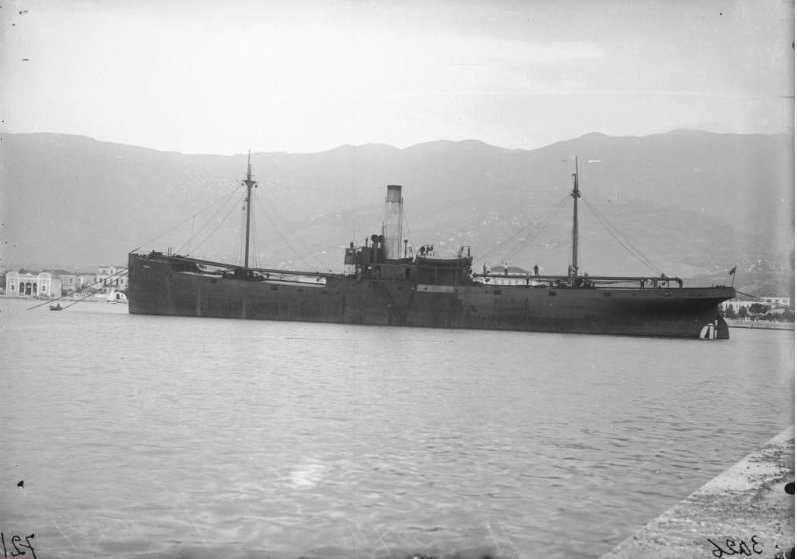
Ship 2. A case of déjà vu
I should have identified this photo from the first moment since the relief of the mountains on the opposite coast is very familiar to me, a place where the citizens of Patras city in the Peloponnese, Greece, spend carefree evenings in the village taverns near the place where the photo was taken during the German invasion.

Personally, I have combined the landscape with beautiful moments diving in the wreck of the minelayer Nestos.
But the low cloud cover on the top of the high mountain in the period photo that I hadn’t noticed when I first examined the photo made me not recognize the spot until I came back almost a year later and finally recognized it.
Of course, this could be one of the two ships other than Nestos, that sank there.
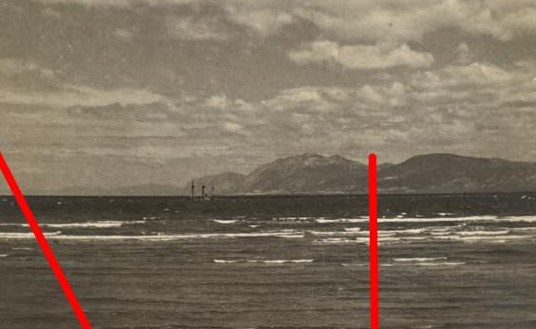
This is either the cargo steamship Athena, the passenger ship Spetsai, or it could eventually be Nestos!
The point where the photo seems to have been taken as well as the resemblance to the bridge (the chimney is missing) probably leads us to the second ship, but Nestos remains a possibility too!
Asking for the public’s help
Wreck of Greek freighter Agaliani, 1911 tons, heavily damaged at Piraeus on April 6, 1941 by Clan Fraser explosion and towed to Salamis where she ran aground in Selenia area.
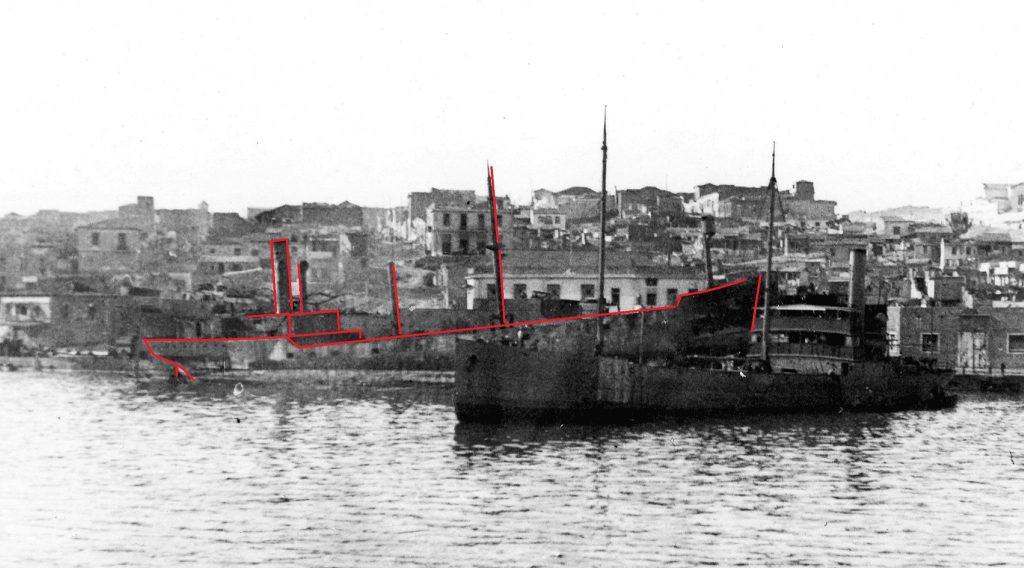
In search of beaches with coarse pebbles where the ship in the photo could have sunk, areas were examined in Corinthiakos, Evia, Sofiko Corinthias and Salamis with the latter gathering the most possibilities mainly due to the similarity of the ship after the bombardment to a photograph in Reinhard Kramer’s archive via Aris Bilalis.
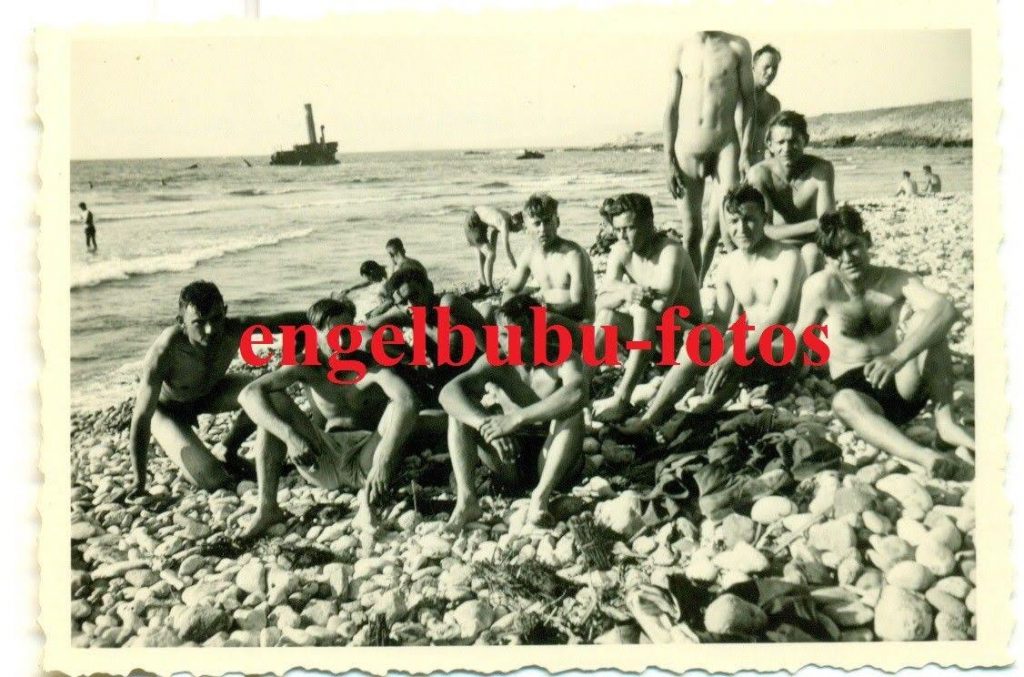
For this case, we ask for the help of anyone who may know something about her identification.
